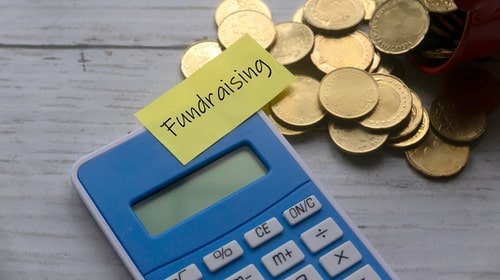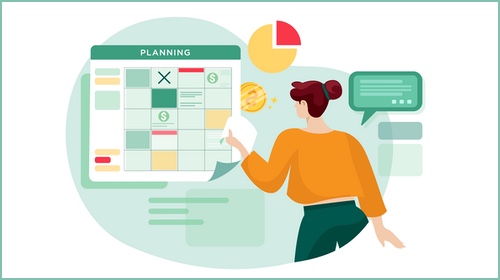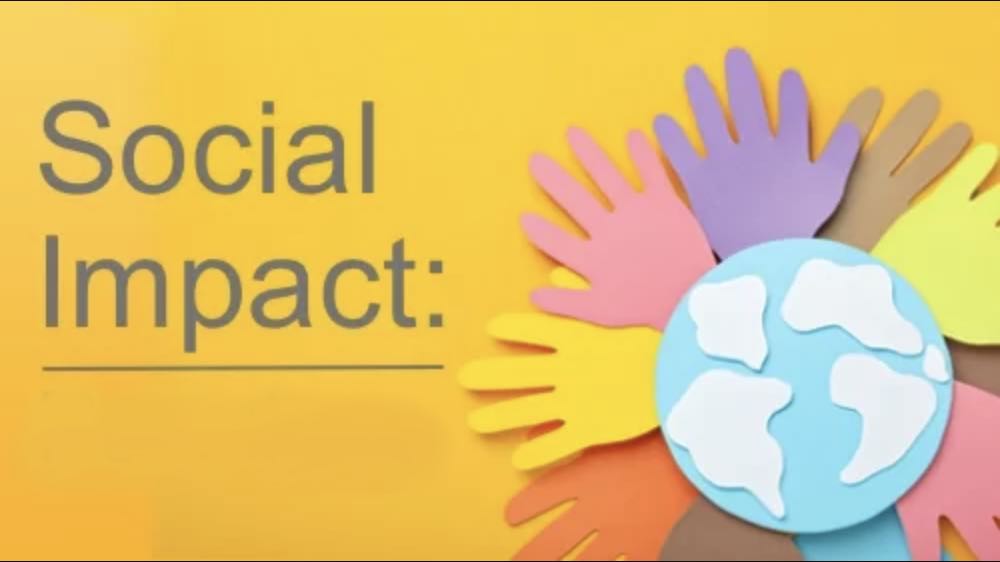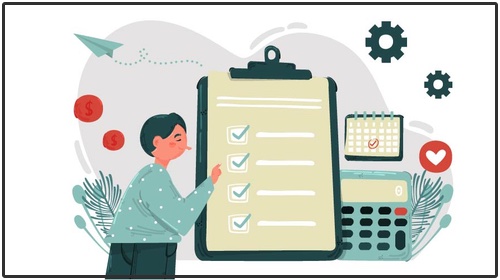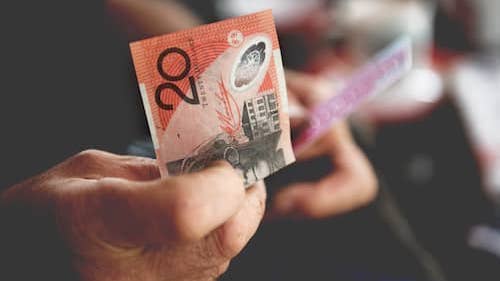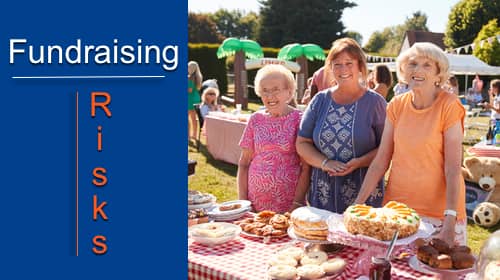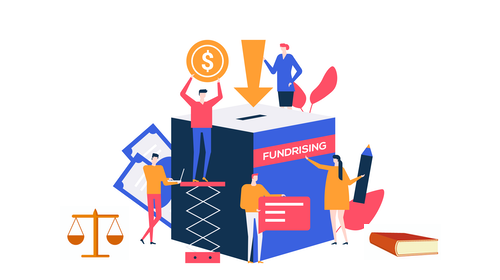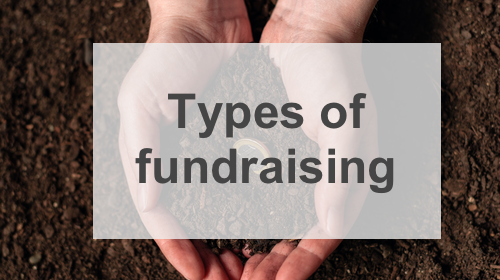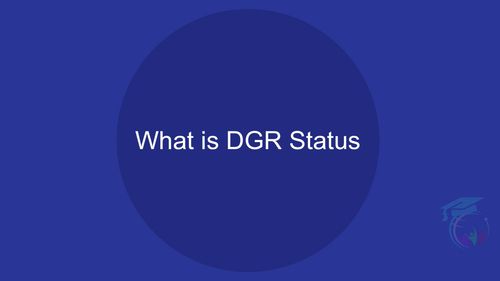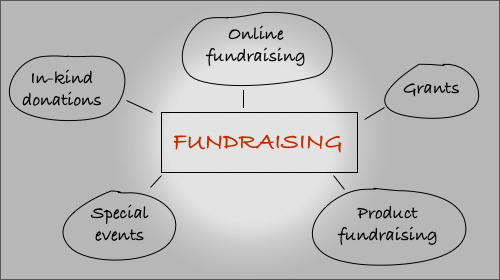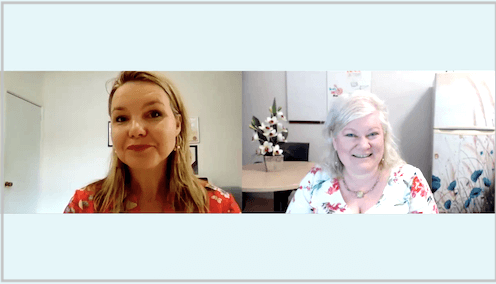Create a Sponsorship Plan
Watch this recorded workshop to help you create a sponsorship plan.
Authored by: iClick2Learn Team
Translate Text
– Good morning. We are here to talk about sponsorship. So thank you so much for joining us for this session. It is very much tailored to events and opportunities within the community. But today we’re a very flexible in looking at some of the needs more broadly of the community, but let’s kick off this morning and let’s tell you a little bit about myself. So you get a bit of a feel for where I have come from through this presentation X event managing myself done a lot of community and tourism events everyone from a small community event through to these massive one. You can see on screen which actually saw 30 nights consecutively through an event that we held for tourists and for locals. I also headed up the activation and events department at Sydney Olympic Park Authority. So come from a very broad spectrum of In that regard and also used to run music festivals and the like one several Awards which have been lovely to receive but really Testament to the work of my team and and the broader team of which I worked in the space. So I’ve got a little bit of experience in this regard that I can share with you today.
– So I’m going to take you through some lessons that certainly need to be considered when dealing with sponsorship. Okay, how many of you feel like this every time you say right? Can I talk to you about sponsorship and they’re hiding behind their chairs and they do not want to engage in a in a fruitful conversation. You also might feel a little bit like this yourself. It’s like oh I’ve got to go ask for money. This is really really difficult and I’m gonna get that no and it’s deflating. So certainly the one thing I will tell you is please don’t take any of these personally this is business but it is challenging and the sponsorship world is only increasingly getting challenging with all of the the needs of the community and can I say we’re probably in a space that we have been building for quite some time in the growth of not for profits in our communities right across Australia. The level of increase of not for profits is escalating and that just means that there’s more people wanting more money to do more good. That’s a great thing to have we’ve all got objectives and and instigated by need in the community. But what that has done is diluted a lot of the capacity in our sector.
– So sponsorship is really key when it comes to delivering some of that capacity for all organisations. But look, let’s tackle it head on let’s go through some lessons that might help you just shy away from the back of that chair and get started. So it’s sponsorship. Let’s get remove that word. Now. Let’s call it Partnerships because that’s exactly what sponsorship is sponsorships have to be treated like partners because it’s an even balance you want something they want something and when that is equal on both sides, you’ve got a potential of a great partnership opportunity where it is heavier on one side or heavier on the other. It’s not a sustainable partnership and you’ll often find that if you do have a relationship with a sponsor that is one-sided or another it’s not going to last it’s very much going to come undone at some stage of that relationship. So picture this in your head get your balance beam or you’ll see sore or whatever. You can visit and say, okay, where am I going to find where they benefit as much as we benefit and we’ll talk through some of those options very soon. So again just aim for a sustainable partnership the more you spend with partners that are going to be one-sided or another is in fact, probably a waste of your time to find the one that is balanced or do you spend more time in finding that balance?
– So it does become a five year or 10 year relationship and not a six-month relationship. Okay, so then we can come out with a great relationship that we can build on over time. So let’s talk lesson one. Does anyone just hands up is fine. Does anyone know Simon sinek? He’s a yep fabulous. So okay for those that don’t know Simon going to encourage you to look up his video on the Golden Circle. I live by this every day and with all my strategy work that I do the Golden Circle for me is is really key to driving any outcome in business and community in events anything. So the first lesson in any sponsorship is know your reason for existing and this is not just your vision or Mission. This is where the emotion really takes part because most organisations as Simon are very well articulates. They know what they do. They understand what they do every day what they turn out what they do as far as activities. Some of them know how they do it and most of them should know or thank you for putting that into the chat too Nicholas they know how they actually deliver on their whats. They may not articulate it well, but they know how but most people don’t know why they do what they do. And when you work with your team to understand that aspect of why you do what you do, you’ll be surprised what happens everyone starts to get a little bit emotively connected to your business to your activity to your event. And that’s the same with your sponsors as well or your partners. Once you can articulate why you exist there could be a real easy merge of their values with your values. This takes away all of that stuff that tends to be noise that we promote so often and get straight to the point where there’s an opportunity with a partner that can meet at Value level.
– And again, that’s where your Balancing Act happens. If you can get the values together on the same side. That’s your start to a great Balancing Act. Does that make sense just nodding a heads and that’s right. If you want to ask a question certainly put your hands up. listen to We have a buying life cycle for anything we purchase in life today. So if you think about even today if you went down the coffee shop and bought a coffee you went through this life cycle as much as you did when you looked for your best TV or your your latest car. Everyone goes through these cycle some might do it quicker than others. And depending on the purchase you might do it quicker than others. So the first one is that we need to be aware of the product or the need we need to be aware of. We have a problem. We need a solution. Second one is we need to consider the options for that problem. So what options can we have to solve the issue at hand? The third one is we then have an intention to purchase.
– So that’s when we start actually comparing the options and balancing up and weighing up what we have. The fourth one. Is that conversion? And can I tell you the biggest mistake in any sponsorship agreements is this is where people think that it stops. The buying cycle continues and it’s about affirmation. Did I make that right choice? Think about the last time you bought a TV or a car with a moments in time ago. Oh, maybe I should have chosen the other one. There’s a real point in time where you can affirm that they’ve made that right decision. And the most important of all is have you actually converted them into a promoter of your business your event your activities or have you built them being a detractor which then ruins your whole opportunity to make that a sustainable partnership. So we’ve got to look at these six areas and focus in on that life cycle and how we actually work with potential partners. So the first one what is your solution to their problem? Let’s think about this.
– If you have a sponsor there are a good fit if they have a problem that you can solve. lesson number one awareness is a big challenge with marketing. But if you can focus in on where your values are at where you’re why exists? And then you can focus in on your solution to their problem. step two in your consideration stage of a life cycle a buying you need to articulate very well how you stand out from all of the other options that they have. What is your unique selling proposition or your USP? Why should they choose you over someone else that has a solution to the same problem? Okay, so that’s when we’re starting to get into the second stage the third stage. Now. This is where they’re intending to probably have that arrangement with you. They’re actually considering that but you could provide an option for their problem. But what they’re going to do is they’re going to come with questions and they’re going to come with areas that they go. Oh that organisation could give us why you could give us Zed, but you know, I need to understand a little bit more. So they’re going to come to you with questions.
– You know yourself more than anyone else what your frequently asked questions are going to be when it gets to this stage. Have that prepared have that ready to be able to provide any potential sponsor that gets to this point. So have it on hand make sure it’s really easily accessible open to to their access so that you’re not throwing up any obstacles at this point because this is a real crunch point. They’re looking at you or someone else. You’ve actually got them interested make that customer Journey really really accessible and easy for that customer. The next stage is conversion. So great. We’ve got them interested. They’re actually looking at your services or your event or whatever. You’re offering For Your sponsorship and they’re going great. Let’s go. The obstacles thrown up at this point are probably one of the highest limiting factors to converting sponsors and that is ease of access ease of transaction. If they’ve got to go through credit forms, if they’ve got a jump through hoops through the organisation to sign up. How easy is it for your sponsors at this point to go? Oh, it’s just all too hard and back out. I’ve seen it time and time again where people have lost sponsors at this point because there wasn’t a seamless transaction. Or a seamless way to get them through the system.
– Yep, think of it like your first class seats in an airline. seated first given drink on arrival Would you like the fish or the chicken? Would you like me to get you a pillow? Treat this at that point like it’s a first class seat. How else can you help them in that transaction? making sense great. Second the next stage the second last one. They are converted. They’re part of your business. Your challenge at this point is to keep them engaged. Keep them wanting to be a part of your business. How much information can you give them? that they want Don’t flood them with information. Give them what they need. Again. It’s that balance of what you want what they want make sure you understanding that when you enter a relationship and ask them as they convert. What do you wanting from us? How frequently do you want it? How can we support you in in delivering more for your board your managing directors your stakeholders. So ask those questions at that conversion because that’s going to help set up that affirmation period for you. live by that rule book because when you get to that last stage, hopefully they’ve gone jeez. That was a great experience. I’m going to certainly recommend to some of my colleagues about this organisation doesn’t have to be new sponsors. But certainly they’re going to Advocate on your behalf. No matter what it is.
– But the best part is I’ll probably come back for a second round or a second agreement. Okay, so consider all of those stages because if you don’t He certainly don’t get that sustainable approach, but the effort will be worthwhile. I can tell you. I’ll just pause that. Okay lesson number three, what are they buying when we go to a shop we can certainly see our products. We can certainly smell our products and we can feel our products. We’ve got to get to the stage where our partners really understand what they’re buying. Really can articulate to their stakeholders what they’re buying. So the more information you provide then the easier it is for them to then obviously transact or convince convinces. Probably not the right word engage all of their stakeholders where they need to. so your why is certainly really really important at this point. We talked about Simon cynics Golden Circle which delivers an understanding of why the organisation exists why the event exists? What’s it trying to achieve? They’re certainly buying into that. Why? But that’s not enough. We then need to tell them what they’re going to feel what they’re going to smell what they’re going to taste in here. Okay similar to a transaction in a tangible fashion. Where’s the tangibility of what they’re buying? Let them see it let them smell it. whatever you can do to deliver that is going to help in that transaction period So for events, can I tell you again?
– It’s not about logos. It’s not about tickets to the events. Sometimes it is but it’s not going to be a sustainable partnership. It’s about who they actually have access to. Right, so focusing on events for a section that’s for a session. If if you’re if you have an event that you want to partner for. It is more than just about. the access to logos what we need to drive home is who is your audience? It’s your audience that they’re buying into. It’s the sellable item and proof of why you exist. You’re attendees your event a crucial to anything that comes with a partnership and that could be who you Market to as well you who you convert into that event, but that’s what you’re selling.
– Okay, so forget the levels of gold silver bronze when they get the higher logo placement the lower logo placement and the even lower logo placement. It’s not about that. It’s giving them access to something that’s going to help their business. Now, whether you pitch your content at a gold silver bronze, that’s totally up to you. But one thing I’ll say to you is have the conversation about a partnership agreement that suits them. Please don’t go in with the template and expect people just to sign up the more tailored the approach With Your sponsorship the more sustainable. It’s going to be they see the opportunity of working with you to gain outcome. It’s not just about getting a logo on a sign or a website or a link here. That could be part of it, but it’s not the solution. It’s the largest solution at play here. so for any proposition you send for an event? Two thirds. I think I’ve got it here. Actually just back one step when you’re talking about your audience. We need to understand who they are. Where do they live? What are they buy? How often do they buy it? Why do they purchase the more you understand about who is actually attending your events. The more helpful. This is going to be in getting Partnerships on board. You need to know how they think And depending on the the sponsor. Say for example if you wanted a car company on board. What’s a car company going to want? They’re going to want access to their demographics that they are targeting.
– So the more you can refine your attendees and understand what demographics you have you can pull out that one and say okay Land Cruiser. We’ve got your target market which is don’t know what it is now, but it used to be 35 to 45 that are just you know, the kids are out of the the car seats and now they can go away for weekends. So, you know, that’s a great demographic and look how many we have coming to our event. This is perfect for your business. Yep, even better in your survey last year. You actually asked the attendees. When are you thinking of buying your next car? How powerful. So having it as a strategy Around Your sponsorship and understanding who you want to Target will also help to inform what you need to know about your audience. If you’ve got ideas about who is a good fit for your business great start Gathering some information that’s going to support that proposition. Understand more about your targets your guests people engaged in your your organisation who your stakeholders are and give them that proof that if they get involved with you that they’re going to have some of their Solutions met as well.
– So, please don’t do any proposition that has none of this information in it. Two-thirds of all proposition should should really concentrate on who the market is who you talking to who you’re engaged with. Who are you stakeholders? Who are you connected to? Who else is sponsoring? That’s a great one? Often we get Partnerships on board because they just can’t not be a part of it. If the others are sometimes it’s a distractor though. Sometimes it might be well, that’s my competitor. I don’t want to be involved knowing that is really really helpful. But again, it’s about conversations and treating it like a partnership and not a sponsorship. lesson 4 the 80/20 rule This is a big one when it comes to sponsorship because of the limited capacity and man Human Resources we have in our sector in the community sector. Because if we spend 80% of our time on 20% of the outcome, we’re going to be wasting our time. What we’ve got to do is spend 20% our time on 80% of the outcome and that’s what happens with Partnerships. We’ve got to do less of more. If we have lots and lots of sponsors at little $250 levels and they need a logo here and they need a report delivered over here and they want something over here because that’s what the silver level gave them. The effort and time you invest in putting the logos in sending the reports out making sure that they’ve got all those boxes tipped is going to be a hell of a lot more than if you worked with four major sponsors.
– And worked with them for really great outcome. Lots of little little dollars everywhere means time. What we’ve got to do is be a little bit more smart starter and take away the time consumed in all of these things and make it worth your while. Think about it with one partnership. You’ve got your discussions and your agreements you want to work with them what’s going to work for them? And what’s going to work for you? They’re going to have questions. You’re going to have answers hopefully by now, you know, we’ve got some sort of ability for frequently asked questions is going to solve some of that but there still will be that engagement. There’ll be for natural reporting and acquittals and reports that’ll be report required approvals of logos and marketing items confirmation of the benefits and are they actually getting what they wanted to get from the arrangement? And of course that reconfirmation of you know, this is where things aren’t where are we going next? So all of that means time and time as we know is money particularly in community community organisations that have very little people on the ground doing all of that work.
– So we’ve got to work smarter when it comes to Partnerships and that is looking at bigger dollars and it’s a better return for your time, but less Partners on board. If that’s one thing you take away from today, I’m pleased. I think too often. I see all of these little logo placements everywhere and I think wow the time it’s invested in that how much actually did they get back from that opportunity? And did a confused audiences and there was too many of them really to take in and get any advantage for those partners. Have to keep asking yourself. What is the partner getting from this relationship? And what are they getting from? What we’re providing them less than five the big one? stand out Stand Out amongst the crowd and be Innovative Innovation is certainly reducing in today’s world and I think it’s due to lack of time and energy, but if you can just stand out and do something that no one else is doing how powerful can that be in engaging potential sponsors. So we’re now just talking about Innovation. And I think what we’ve got to do is really set ourselves amongst the crowd and think about all those life cycle changes that we’ve talked about and how unique you can be in each of those stages. So when we’re getting to the intention stage, can we do something really unique that none of our competitors are doing so it’s like all I’m gonna have a look at this one and you get a little bit more attention and focus on your product if you’re doing something different. Think about how you can invite them to your place and give them a familiarisation of the office with no obligation. What can you send them in the mail that they’d like to receive that’s not going to cost an arm and a leg for you to provide but provides a point of difference that no one else does. What is the memorable things that you can provide along that Journey for them? When they get to the question answers, how do we inform that answer? But then follow up with that response in a unique fashion that no one else is doing. You yourself can pick out the unique differences that you can set yourself for.
– I think a brainstorm with a team is a great way to do this. Once you’ve understood your why and really why you do exist and what you stand for in the world. Then look at your values and how you showcase your values as an organisation. And then that will start to tell what you can do differently. How do you bring that to the customer service that you provide to your potential partners? and get that cemented into What you stand for? And then I think you’re going to have a great great opportunity to engage some great partners. So I’m just going to recap. So remind us sponsorship is a partnership. Please treat it like that and make sure that the time and energy you spend has a balanced approach. That’s where you’re sustainable sponsorships and Partnerships will be you’ll have a great outcome with a relationship. Lesson one is really know your reason for existing.
– Let’s look at the Golden Circle and understand what our why is once we understand that we can then showcase that through everything that we actually do look at the buying life cycle and don’t miss a step because that is an opportunity for a sponsorship or a partnership to fall through the crack. Let’s look at how we build a solution to a problem that a partner has what is your unique selling proposition? And how can you convey that when they start considering you against others? And how do you respond to questions easily and efficiently that they may have as soon as they start to intend to buy or sponsor your product. How do you transact make sure that life cycle does not fall over at this point? You need to make it easy for people to transact with you pay the bill engage upload images upload logos. What is that customer Journey put yourself in their shoes? What would you want to see if you were dedicating this amount of money towards a partnership and then let that guide your customer Journey. Keep them engaged because this is a crucial point to make sure it’s a sustainable approach with a partnership. How do you keep them involved in your why how do you keep them committed?
– And then most importantly how do you get them to actually Advocate on your behalf and become an ambassador and promote you from that point and more importantly come back at the end of the day. So make sure you know what your why is but let them feel taste and touch everything you’re providing and really when it comes to things like events and Community work. It’s about who they have access to who is your audience? And how do we articulate who we engage? How do we work with them? All of the stakeholders? That is your sellable product? That’s exactly what you’re about. So no more about them than ever before let’s start asking them questions that will drive good outcomes in Partnerships. What can we know about our customers that are help going to drive the sustainability of our products and our services? So all of that content needs to be put into proposals it needs to be spelled out what you have access to. So that they know that if they come into a partnership with you, it’s going to be worthwhile. And don’t forget the 80/20 rule. Let’s look less and more.
– Let’s try to drive the best human support and capacity that we have in the right direction and not try to waste time in to try to do too many things for too many. It’s a story of my life. I think my husband keeps saying no say no say no, but lots of little doesn’t add up to a lot of money it adds up to time. So make sure you are looking at all of the energy you’re putting into developing your partnership and relationship with your partner and making sure that it is worthwhile. It’s a better return for your time if you can make sure that you are doing that. And don’t forget your Innovation. Let’s Stand Out amongst the crowd. Let’s give them something different. Let’s act in a different way. Let’s Send information a different way.
– Let’s invite them into our business and get them part of our business. You’ll find that then they’re going to want to be part of your team. So going back to the questions there. What we can do in the next session is drill into a little bit more of the content that we’ll get feedback from you. Once we stop the recording on any gaps that you want us to identify. But certainly what we’ve got to do when we identify donations versus Partnerships is take that first lesson and say sponsorships are Partnerships. Donations we believe in your cause. We don’t want anything in return we believe in it. Sponsorships are Partnerships. This is a relationship that you need to really nurture and spend time to develop. The second one there how to find potential sponsors in your community really easily know your why understand what they stand for and guess what where it actually combines and actually merges in a value proposition. You’ll probably find you’ve got a great sponsorship opportunity. Understanding your why will untap areas that you thought you wouldn’t be able to untap.
– So you’ll see very easily the values that you’ll have by doing that exercise and where others value the same. What do businesses look for in a sponsorship relationship well today it’s about return on investment It is purely about if I invest my time and energy and money into this organisation or into this event. I need to then go back to my stakeholders and say this is what we got back. It’s very hard these days I think clubs are the only ones that exist today that have to give out money with with little return. We are now starting to see even a shift in that area where it has to be about that return on investment. What are they getting that they can report on to their stakeholders? So you need to think about that yourself when you’re providing your reports is the content enough for them to go to their board of directors their stakeholders and say wow. Look what we got for our investment. The more you can provide that upfront to your partners, they’re going to be a lot more happy because they don’t have to spend hours in doing their own reports. How are sponsor can add value to your program incredibly easily once you’ve found out where you match your wise and understanding of why you both exist because and and if you sit down with them and say, okay, here’s the opportunity. Very quickly, you’re going to start seeing some brainstorming activity where you both can benefit. And again, it’s like that scale or the Seesaw making sure that there’s benefit on both sides. Make sure you go in with that approach. How else can you value add to this because we can do this.
– So what can you provide here when we can provide that here? Always maintain that axis when it starts to dip either way, you’re going to start seeing some cracks form. Developing genuine relationships with your sponsors. Absolutely. This is about what we’re talking about be up front with your why be out front with your values sit down with them create that scale that seesaw of balance and everything you discuss. It doesn’t have to fit into a gold silver bronzer or Platinum it can fit into their sponsorship agreement. It can fit into their partnership plan that you can deliver and it doesn’t matter that you’re going to have other sponsors that might have similar things and by economies of scale you’ll be able to deliver them across multiple a lot easier, but they see it as a tailored program for them. Then it’s a lot easier for them to also sell it that the advantage that they’re getting for being part of your programs.
– In the last one. What do you need to research and think about For Your sponsorship plan everything I’ve just talked about but also your research on the organisations is going to really pay off. So where you see a balance of what they stand for in those values when you dig in more into those organisations, it’s very easy to see in some of their planning or their business planning documents where objectives might Point direct to what you’re providing. Pull out that sort of content out of annual reports or business plans out of some of those major companies you’re looking at and show them where it meets show them what they can expect from a relationship with you because you understand what they’re aiming to achieve most of that content is online today, so you could probably find a lot of that.
– But certainly any sort of research you’re doing that area about the company on their website building that into a tailored approach with a partnership plan will certainly pay its dividends. A lot of content there. I know but I’m going to stop the recording and thanks everyone for watching this video today and we’ll talk to our attendees just about some specific challenges opportunities or threats that they might be seeing and we’ll see you at the next session.
– Thank you for joining us for another sponsorship session with iClick2Learn and I’m Lori modde and please to come to you to deliver this session under visitor economy development. So if you were looked at the last recording or part of the workshop number one, you might see a bit of consistency in the content that we’re going to go through today. But this is a really good chance to have a bit of a refresher on all things around sponsorship. So I won’t concentrate too much on some of the the areas of depth, but we’ll give a bit of an overview. But first may I please acknowledge the Darug people that have certainly gone before me here in the lands of which I come to you from today and pay my respects to Elders past and present and I just love hearing more about the stories of the history that has become so embedded in what we want to interpret in tourism and in the communities today. So yeah without further due let’s let’s kick off.
– So as you know, I’m Lori Modde have a bit of experience when it comes to the events area and and Community Development. So I’m hoping to bring some of that experience to life in what we’ll present today. It is quite diverse. It actually covers everything from rural Outback Australia right through to Suburban Sydney, but let’s let’s sort of get straight into it. That’s we said last time the difference between our what we wanted to look at in sponsorship is really looking at how we treat sponsors and sponsorships for whatever we want you to invest. sorry, hang on to and we want to make sure that our sponsorships are looked at a little bit differently from our content today. Also, we’ll look at you know, how do they affect your community and what are we actually got to do when we’re talking to Smalls as what we got to sell them what have we got to actually try to embed them into what we do every day every week every year and talk about the relationship that will build with these with these people going forward and what we’ve got to think about in this sponsorship plan. So as I said, we’ll go through a bit of a guide on what we did last time, but now we’re going to go through our sponsorship plan today. So we all felt feel like there’s a times and we shouldn’t because what happens is that sponsorship is a partnership and we’ve got to treat it as a two-sided opportunity to really engage with our sponsors. They want something from us. We want something from them. So have a really great understanding of how we can actually effectively work together for a combined outcome.
– And then we’ll actually have something that is a lot more sustainable than a quick signature a quick check in the bank and a quick logo on a sign that we will have to then renegotiate next year the year after the year after that. So let’s treat it like a partnership from this point forward. We’ll have a lot more Mutual discussions and you’ll be amazed at what can come out from the opportunities. Once we start treating our sponsors like Partners. So look, let’s go through lesson one. If you remember we talked about the reason for existing and really most people can articulate very well what they do and I I’ve stolen this from the Golden Circle of Simon Cynic and purposely acknowledge. He’s amazing work in this space. But if we ask people what they do, they can very well articulate what they can actually do and what they do every day and sometimes they can actually also explain how they do that. That become that’s part of second nature of the activities that we do but I’ve got to tell you it’s still quite absent today in people really understanding why they do what they do. This gets to the Crux of really what a good Vision should be in a business in an organisation in an event in anything that you’re trying to get partners on board with you’ve got a really articulate why you exist. What is it that makes you do this work every day. What is it that makes this organisation continue doing what they do every day. And that’s really important when we look at the lesson two, which is the like the buying life cycle. So a buying life cycle is something to understand someone going through this process as they look to do a purchase or engage in something where you’re transacting. The first part of that life cycle is being aware that the product actually exists. The second is considering that that product is an option for them.
– But then the intention stage they’re starting to really ask some serious questions. They’re trying to weigh it up before they convert. So that intention is like the comparison stage before they actually then transact but it doesn’t stop there you then have to have that affirmation of have I done the right thing how many times you know, have you bought something and you’ve you’ve gone up this is not what I need and you’ve gone for that refund. It’s very similar when it comes to things like we’re discussing today. We’ve got to have that affirm. For that continual life cycle of that partnership. Then we have a converted partner. And when you have a converted partner, you actually have an ambassador who actually stands for what you do and and often can reap other rewards by being that converted person. So as I say this is a life cycle that we’ve got a really understand because at each stage of this life cycle, we have a role that we need to articulate or questions that we need to answer. The first one in Awareness is we need to understand what our solution is to our customers problem. Once we can articulate that that’s when we can start building that awareness for what we offer. When they start to consider that our product or our service or our option is something to look at we’ve really got to articulate a good USP. We know what a USP is a unique selling proposition. Once we can articulate that uniqueness to other competitors. It makes it very easy for them to do that analysis and as they get to the intention then we can respond to other questions that may come up. So it’s really setting ourselves out from the crowd of other options.
– And that conversion aspect I’ve got a two is probably one of the hardest things that in in tourism particularly in community in events, it falls short because it’s very hard for those people to transact. We send out these glossy proposals and say come on board and they go. Yep. Great. We’re really keen and then it’s trying to get commitment from that person to transact to invoice to get logos to get all of the different things that are part of that conversion. We’ve got to make that process easier to make that part really seamless because what’s going to happen is then we’ve got a good opportunity to affirm their decision as the right one. If they’ve gone through all these drama, they’re constantly thinking have I done the right thing. Have I should I have gone down this part. Should I be doing another option that I research back in my consideration phase it’s really important that conversion aspect for the affirmation and then keeping them engaged from that point. Now as we say, you know the check in the in the mail or the money in the bank is not the end of any partnership or any sponsorship by any stretch of the imagination. We have to keep them engaged.
– We’ve got to keep communicating to them to make sure that they are part of the business part of that partnership that we we promised them. And be open and transparent in that partnership. And then that final stage which we spoke about that converted aspect is will they keep coming back or will they come back for a renegotiation next year because they are so sold with what the experience has been for them to date and like I say they become their ambassadors for your product or your opportunities that you are seeking. So yes, that’s pretty much the life cycle and by the stage that we get to the end of that if we’ve done it. All right. We’ve got a great partnership in place. The lesson three we spoke about what are they actually buying? What is it that we are selling these people and it comes down to that tangibility of what they’re getting for their money. Or they’re in kind if you’ve got some in kind opportunities. And really comes back to that that first area. We spoke about understanding what your why is If they really commit to understanding why you actually exist and a balances with their values and their outcomes you’re starting to build a really great Mutual partnership.
– So definitely that lesson three is you are selling your why they are buying your why because then it integrates into what they are doing, but you’ve got to really articulate it in a way that they can feel it. They can smell it. They can see it. So how do we get that content down so that they can visually see their connection with your product your service or your event. So that was lesson. Um, well should be three there. I’ve got three there so they can really tangibly look at that and and smell it and and buy it, but I know this is about events but it goes the same with anything that we’re looking at for Community Services or other opportunities that we’re getting Partnerships on board. It’s not about logos. It’s not about tickets and it’s it’s more about who they actually have access to. So once you’ve articulated your why it’s very easy to then connect with who your target markets are And it’s those people that engage in your activity that you are giving access to through some of your Partnerships. So who is your audience because that’s your sellable item and the proof of your why? Okay, what we need to understand at this point in time is we need to know a lot about our target market. Who we who are our customers every day of the year or every event that we hold the more we can understand about them the more opportunity. We have a presenting opportunities for partners. It’s as I said before that’s what they’re aiming to tap into is your why and your your audience.
– So the more we have available for them to know about these people the more the opportunities and you’ll start seeing that when we go through the sponsorship plan a little bit later. So, who are they where do they leave? What are they by how often how do they purchase think about some of the big sponsors that we all want to get on board? You know, they’re probably wanting to see purchasing what what these people purchase in that area of industry or how are they engaging if it was a private Health company, you know, how often are these people looking at options for health insurance renewals what sort of level you know, are they looking at for because they’re demographics is a family as a couples is it old older people? It’s all that sort of thing that if you can package up from your customers, you’re presenting an amazing piece of content for potential Partnerships in that area. So again, the sponsorship plan will help us articulate this when we get to that a little bit later. And yeah, can I tell you if you’re doing a sponsorship proposal that doesn’t actually contain two-thirds of this content. We’re probably missing a great opportunity and you’re probably telling them a little bit about too much of yourself and and your product in actual fact what they’re actually going to access. So have a look at your sponsorship proposals take a step back and say right is two thirds of this content about who our customers are or is about us. Very little about us more about what they’re actually getting access to.
– I’ve often said to a lot of people get off your high horse. You’re not that good. Let’s reduce your content about you and let’s concentrate about the partner that we’re trying to get on board. So that’s a really good rule of thumb. Is that two thirds area? And even less if you can. Good thing to also understand is who else you know might be aiming for these people who might also be bidding for them. And what are they looking for in those Partnerships? But also, you know, who else is is sponsoring something like you’re like your event your organisation your your business because that all helped Define some of the USP that we’re talking about before the unique selling propositions the more you can find your uniqueness and building that into your proposal the more opportunity that you’ll have in coming through that that consideration mindset and then looking at your opportunity more than others. Okay lesson 4 goes into the numbers and this comes in when you have this beautiful spreadsheet of a hundred partners that you have on board and how much time do you have to invest in keeping those hundred people engaged communicated to report it on and then signing up again for next year and getting the new logos in it’s very time-consuming.
– So what I want to express to you today is that 80/20 rule and reemphasising that we should be looking at less is more so instead of lots of little bits of sponsors and lots of little bits of money. How do we look at less opportunities of Partnerships by getting more from them? So that’s an incredible important thing to look at when you look at timesaving which sponsorships let’s face it are very time-consuming. They are very costly with time not necessarily in dollars, but we never have enough resources in not for Sense, we’re always wanting more resources and not-for-profits. So. Let’s make use of our time more efficiently. Let’s think about it. When you have a partner on board. You’ve got to look at the discussions and the agreements around it. You’ve got to have the question answers backwards and forwards around some of the things that they want access to or you want to provide. You’ve got a transact the financials you’ve got to do any approvals of artwork. All of that type of thing your confirmation of yes, you got this and look at this article, isn’t it? Great. That way fabulous and look how good you look and then the reporting after it’s all over is probably the most arduous component of any partnership or sponsorship is going back to them saying thank you for your business and look what we did for you. And then you’ve got to reaffirm again.
– So it’s quite time-consuming. So you can imagine doing that a hundred times versus five times and getting the same money. So what we’ll talk about when we go through the sponsorship plan is the areas that we can make sure that we grow and look at those bigger chunks of opportunity versus lots and lots of little ones. Like I better return for your time as we said and lesson five for me. It’s about Innovation. It’s about really being a little bit different a lot of the usual sponsors that are out there and the partners that get on board with the things that we offer do this all the time. And I think if we stand out amongst the crowd with a little Innovative touch, we often can stand out really well and get some of those really key Partners on board. So think about how things you could do differently. What can you do to really make them stand up. Look at you. It might be just how you implement your marketing plan this year. It might be how you communicate with them. It might be actually inviting them to an event of some sort where they feel. That they’re cared for it. Whatever it is. Just think outside the box and present them something that no one else is presenting and start thinking a little bit different when it comes to engaging responses. Okay, so now I’m going to just pause the recording.
– Okay, great. We’re back again. I just wanted to clarify everyone had questions or or anything. They wanted to ask on that but we’re back now into what we want to cover for the rest of today’s session which is the sponsorship plan that we have that is available. It is just literally a bit of an idea of a template you can manipulate that however you fit with what you want to see in Your sponsorship plan, but it really does go through some of those things that we’ve got to think about when it comes to the right sponsors or what I like to say is the right partners for our opportunities. Okay, so you can see here. It’s taking our first lesson into account and it’s why do we do what we do? Let’s articulate that in one sentence. So it’s very clear and we can easily communicate that as they say the elevator pitch but it comes naturally into your proposals into your emails into your newsletters everything you speak of should articulate why you do what you do. So here’s a great template. We’ll stick it up top. It’s number one. The second thing is let’s okay. Let’s explain how we do that. Okay, the third one is what do we do? So it’s working a little bit backwards to what the the circle the Golden Circle normally does, but that’s important because once we understand why we do what we do it helps to very much articulate the rest. So, how do we showcase this? And what do we do? And then the fourth point there. I really want you to consider who are your customers and I don’t want to hear couples. I don’t want any families. I don’t want to hear 60 year olds. I want to hear it’s a couple from Sydney suburbs western region that have got a doubling come kids between six and twelve you need the detail the more you get the detail as we’ve said in our earlier segment here the more information we have available for our potential partners. So you should have no more than four.
– Actually, you should have no more than three main target markets to make it easier on your budgets. We all don’t have Coca-Cola’s marketing budget. So let’s look at the top three markets that you deal with and it might be only one or two, but definitely top three with an emerging fourth one is always a good one to put in there because if you have an emerging market That’s a massive opportunity for some of those emerging sponsors that are trying to get into the same Market. Okay, we’ll go through that a little bit more detail later. But articulate here who are your customers in a lot of depth, please give me that depth that will help you and will help your sponsors. Okay. Now this looks scary don’t be scared. Right what we’ve gone here is down the left hand side. I want you to articulate from what you know about your target market what are their needs right now in your Marketplace in the setting of which we operate today? 2022. What are the needs that this Market has? So if it is family doubling come western suburbs of Sydney kids between six and fourteen what I said, it’s important something like that. Um, what are their needs? Well, certainly cost of living is becoming greater. They’re probably looking at things like Morgan new mortgage Banks they they might be considering um Private health cover which we spoke about before. What are they their habits, you know, are they sporting on the weekends? All of the things that you can think about? I want to see down a left-hand column under customer needs. When we go across to the company or organisation, what companies can help with that? And this is where you start really brainstorming if it is Private health cover great.
– Let’s talk to people. Let’s talk to many Bank. Let’s talk to all of the other private private Health cover companies that are out there that might be looking at that market for their products. So that’s where you can start dumping all of those wish list companies and organisations that you want to deal with that can respond to to that need. Then we get interesting. This is where remember that scale of equilibrium and that partnership model of The Balancing Act. We want to work out what we can offer them and we want to work out what they can offer us. And often we love seeing that check we love seeing that money in the bank, but sometimes some of the stuff that they can give us that isn’t perhaps in money form is worth its weight in gold. So what else could they provide us as a partnership that will cut costs now, please don’t be fooled by the in-kind disasters that can happen with this. You know, we will give you XYZ. Well, if it wasn’t a cost to the organisation or resource that we had to commit well, then it’s probably not worth too much to the organisation. So when you’re looking at that in kind value, it’s got to be something that would normally cost you time or money. Okay? It’s not something that would have been an add-on. Yeah. So for example, you know our company might offer, you know in kind we could give you 16 bucks a chocolates for free. Well, I never had to pay for 16 bucks a chocolate. So what is the value to us if they provide? sort of in kind So this is where we really articulate what we can offer and what they can offer for us. That’s a value to our organisation. Okay, when you start filling out what we can offer them. This is where you start bringing out that knowledge. You have about your target market how many you have engaged in your business in your event in your activity how much?
– How many times you you speak with these people? You know, it’s all that type of content that we want to see in this template here. And again, let’s research these companies and find out how they’re talking to their customers that we potentially may want to talk to or what is it that they have to offer on that balancing scale of equilibrium to make sure it’s a true partnership. If you remember in session one I said is it start as soon as it starts tilting? You’ve got a bit of a crack in the system and probably an unsustainable partnership. So we’ve got to bring it back to equilibrium or we’ve got to recognise that. These aren’t the partners for us and move on for potential other ones. Now when we get to the right hand side of this this Matrix if I can call it that. This is about the value that we put on this partnership. So looking at all of the different things that we can offer them and what they can give us we can very easily say okay. This is a high priority because we can see that they’re going to help us a lot in what we’re we can do and vice versa. So that’s that’s a h up there. If they’re sort of yep, it’s medium grounds stick a medium in if it’s yeah and probably not a priority. Once we’ve articulated this way put a low figure on it. This is where you’re pricing comes in. So if it is a high benefit on both sides, this is your what I call the Platinum sponsors. Not that I It condone the levels of sponsorships, but you know, they are the higher sponsorship value. So let’s really start talking dollars on what we can package up for these people if there are low priority on both sides. They could be someone that you might still look at maybe on a lower level. But please don’t be fooled by again that time that it takes to still engage with them. So this has to become an organisation decision. If you pursue the elves you certainly pursue the mediums with the aim to try to lift some of those benefits. If they can’t be lifted, then you’ve got to consider. Do you continue with that negotiation as well? So hopefully that’s making sense. And as I say I’ll get through this and I’ll come back for questions. Okay? So Parts three is your risk management Part Of Your sponsorship plan now, this is incredibly important. And I’ll tell you why. Sometimes I have seen it and a client and mine has had it where they have engaged a company in the next day.
– They became the the headline on the Sydney Morning Herald for unethical practices. This obviously doesn’t only affect the company it affects everyone that has their logo or association with that company. So it’s a really good idea in any any partnership program to look at the risks associated with your potential sponsors or partners. So I asked people to just do this on a broad scale to understand where they might be some pain points and if that can be mitigated or if it can’t again an organisational decision has to be made if you pursue that partnership now if you’re out there for Gorilla Marketing, you might be right down your alley going for some of those risks, but you’ve really got to consider how it balances with your overall values as an organisation and what you stand for because where it does conflict doesn’t do your brand any good at all. So you can see there. I’ve used the the beautiful pestle acronym by articulating that the top themes there and and Pearsall or steeple. Whichever one you like to use is a really great tool to use to just make sure you think about all those external environments that might impact something like a risk management tool or a business tool.
– So pestlee stands for political e is environmental your s is social your tea is technology and L is legal and I put two Ease on the end. We’re just economics obviously the funding and the budgets and comes down to money, but also ethical and ethical is a big one in in today’s society where we’re seeing more and more ethical decisions being made and also communities are a lot more attuned ethical purchases. I think covid did something for us in that way, which is great to see that we’re really making considered. Places around our purchases because of ethical reasons now. The other secret on ethical is think about you know, what you don’t want to say on the paper for your own organisation or your own event. So that’s a good one to look at. Okay. So back to the the parts three of our sponsorship plan. Our companies are down the left hand side there and then we can consider. Okay. Is there any political Alliance risk? Are they part of the Labor party other Liberal Party are they are they in a faction that is going to cause grief for us our where our Revenue comes from where our support is, you know, what is the local constituency made of and are they at loggerheads in that regard? Very important things to think about They also could be very beneficial as well. So they might be aligned with a particular party that would support you and support your causes put it into here because not just about risk as far as negative. It’s about opportunities in developing the risk management plan as well. Okay, also budget finances. You know, how’s the company looking is a is it on good with you know Equity. Is it looking like it’s it’s doing well as an organisation often the first thing that’s cut from any organisation. That’s not doing well is sponsorship, you know, one area particularly say to you now is the vulnerability of the building Market, you know, you’ve got to be probably cautious about longevity of some of those sponsors as they start working through the challenging times that we are right now.
– Um ethical risks as we say the pub test or the the front page of the paper test, you know, what are some of the ethics or values that this organisation has are they at a similar stance to yourself or are they different? And how do they differ? Is there any risk there? Resources Staffing volunteers is a really good one to look at this is obviously a social side of things, you know with with heard a lot about some of the you know, the child labor and things like that. They’re using anything that in their systems and processes that is not good as far as staff practices. Do they pay their people? Well, yeah under they engage volunteers that we could tap into all of that type of thing is a really good area to look at in your ears management plan. Technology risks, you know, it might be cyber security and things around that that might be a concern if there are a company that’s mainly overseas do they comply with Australian standards as far as technology integration? Yeah, and there’s a whole lot that could be unpicked with the technology and how they treat their business on the digital Spectrum. Governance and compliance. This is probably an easy one to check out on on such sites like your assic and make sure they’re registered and all got everything in place. And then your environmental risks. Are they being considered for the values in their environment as much as yourself or you know, are you aligned in that regard as well? You don’t want to see someone that’s still producing plastic bags. For example, that’s not going to look good as a pump test. Either that you’re engaging someone that’s potentially in that sort of space. So all the risks that you identify on this page, you’ve got to ask yourself. Can they be mitigated or are they of deal breaker?
– I think that in itself is a really important exercise to go through for even your existing partners and just bringing out some of the areas. You’ve got to keep watch on. Because yes, you don’t want to partner to to be a problem as it gets through. Okay, so and I can’t spell sponsorship obviously. Okay, this sponsorship playing part for is a get shot and this really helps you to plan out what you need to do when you deal with your partners. So I’ve listed all the stages there and you can see the triangles are our major Milestones. There are the things that you’ve got to put into say this is not negotiable. This is our date and time that we have to stick to now if you’re events, this is something you’re very used to if it is organisational sponsorship. This is probably a bit of a moving face more than most but in saying that you might have opportunities that the businesses the partners are going to leverage from so that might be your critical Milestones to make sure they get on board and get a bandage behind some of those major things. You might be implementing. So consider your timing plan it out. So stage one is about your identification of these Partners. So going through that first template, Did is a great great start for that? How long is that going to take plan it into your calendars plan it with your team because then you’re going to start those meetings start those phone calls start that engagement with these people and that can take quite a long time. Then you start doing that agreement. Yep. It’s doing the paperwork. It’s making sure that you’re committing them on board and trying to articulate what you get what they get into that formula. And then any launches or public relations has to be considered. This is a massive opportunity for partners.
– So just to be told that there are partner of a certain organisation is an opportunity unto itself. So even before an event or before organisational benefits, this is a great opportunity to declare the partnership and get some more exposure for what you’re doing and certainly in public relations. It’s cost-effective and and yeah people want to hear good news stories. Certainly they stays so use that opportunity there as you’re starting to sign up your agreements and get some launch activity happening. The next stage is incredibly important and it’s not just about getting stuff from them. It’s about delivering stuff to them. So you might get their logos. You might get their content. You might get everything that you need to build into your offering. But similarly, I want to see you delivering something to them that they can use. Can they put partner of on the bottom of their signatures? Can they put your logo on their website? Can they link to your website off their website? Where is that toolkit that you can provide these Partners where they are being these advocates for you? Again, it’s that that’s two-sided approach. Yeah, you want something that’s equal instead of being just one-sided. So give them as much content as they want and ask them. You know, how else can I help you? What else? Can I give you to give them a template of the press release? Let them send it out to their media as well. Okay, then you get into your programming. This is where the guts happens for your partnership. What’s in that agreement? What did you promise? This is when you start delivering so whether that’s the event or whether it’s organisational your programming is where it comes to life. But as you can see it’s a very small proportion of what everything else is.
– And then you get into your reporting once that’s over and done. You’ve got to then work out exactly what your program is. So your reporting is on the programming you just delivered. And then that renegotiation should be really easy. It should be easy because you’ve been communicating with them this whole time. You’ve been providing them with results. You’ve been providing them with tools. You’ve been showing them the benefit. It should be a natural transition. If it was a pure true partnership to then go into renegotiation and sign for your next turn whatever term that is three years one year one event, whatever. Obviously, I’ll put it in months there. It doesn’t happen that quick but you can put it into any format that would be relevant to your product or your service. And as you can see there, it will vary from organisation to organisation. But the major Milestone areas is crucial to keep you on track and make sure you’re looking at that as as your key drivers to doing all the activity prior. So in part that is literally a really easy sponsorship plan to implement. So just going back for a quick second just re Summarising let’s talk about what we do while we do it articulate who our customers are here. That’ll help immensely. Then we get into who those customers are and what their needs are trying to identify them to companies and what we can offer and what they can offer. Let’s find those high priority Partners in this stage of the sponsorship plan. Part three is then looking at the risks. How can we mitigate some of the risks that are there or other risks unmitigatable and then we need to make the decision of walking away from that partner or having more negotiations on that on those risk areas. And then part 4 is make sure you plan it out. You don’t want to be stuck TimeWise. If you haven’t got enough time to get some of these Partners on but also the the time you’ve spent with these is well worth it because they will come back because they’ll show they’ll say it as a true partnership that works for them. On that note. I’m going to conclude the recording jump to our attendees today and go through a little bit more detail. So thank you for attending.
Related posts
Developing a Fundraising Plan
Create a Sponsorship Plan
Social Impact
Approving Your Budget
Deductible Gift Recipients Status [Course]
Fundraising Risks for Registered Charities
Fundraising Risks for Community and Non Profit Organisations
Donor Personas
Fundraising and the Law
Types of Fundraising
Get Sponsors to Say Yes
What is DGR status?
Fundraising for Your Service
Great Tips on how to Approach a Funding Pitch
- Tags | Fundraising
